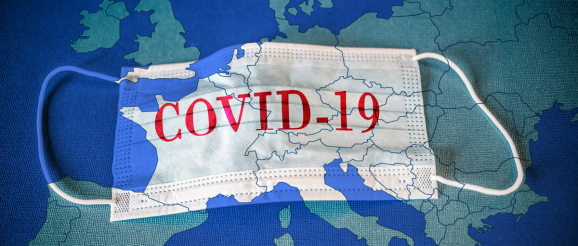Boston Children’s, Google, Others Create Tool to Identify ‘Vaccine Deserts’ | Healthcare Innovation

Boston Children’s Hospital and Ariadne Labs, with support from Google, have launched the Vaccine Equity Planner, which officials call a data-driven tool to help U.S. state and local planners find “vaccine deserts,” or areas with limited access to COVID-19 vaccines.
The tool, “made possible by the generous support of the Commonwealth Fund,” is designed to enhance vaccination access for vulnerable populations and help ensure no one is left behind during the effort to halt the pandemic, according to officials. It can do so by identifying potential future vaccination sites, such as primary care practices, pharmacies, schools, places of worship, and other potential vaccination venues within the deserts.
Officials note that more than 143.4 million people in the U.S. still need at least one COVID-19 vaccine dose, in addition to children under 12 for whom a vaccine is not yet available. While there are more than 50,000 vaccination sites in the U.S., such as mass vaccination sites, retail pharmacies, hospitals and community sites, they are unequally distributed, they add.
For example, approximately 10 percent of the eligible population lives more than a 15-minute drive from a publicly advertised vaccine distribution location. Improving access for these people is challenging, and U.S. public health and community leaders have expressed the need for evidence-based resources to help them equitably and efficiently vaccinate populations and help those not yet vaccinated overcome barriers to access, according to leaders from the organization.
As such, the free and publicly accessible Vaccine Equity Planner tool, officials say, shows that across all the vaccine deserts in the U.S., there are more than 2,000 primary healthcare centers that could potentially offer vaccines.
The tool specifically overlays millions of data points on a U.S. map in order to provide users with information needed to identify vaccine deserts, target potential vaccination sites within deserts, and model the most effective sites to open to reach vulnerable populations, officials contend.
“We know that inequities exist in our healthcare infrastructure, and the COVID-19 pandemic has only cast a brighter light on those inequities,” said John Brownstein, M.D., chief innovation officer at Boston Children’s Hospital. “The Vaccine Equity Planner aims to identify vaccine deserts, areas with low access to COVID-19 vaccination sites, so public health officials and decision makers can intentionally place future vaccination sites in these areas to offer more equitable access to COVID-19 vaccinations for all populations.”
The platform uses data sourced from VaccineFinder, a government-based web system, and Google on more than 50,000 vaccination sites, in addition to travel time data from Google, the CDC’s social vulnerability index, and data on vaccination intent from the COVID-19 Symptom Survey administered by the Delphi Group at Carnegie Mellon University hosted on Facebook.
Users can additionally select the mode of transportation they want to consider and the time they think people should have to travel to get a vaccine and see where the deserts are. Beyond distance, users can assess other risks/barriers to equity that populations face, such as number of unvaccinated people in the area, social vulnerability, or intent to vaccinate, officials explain.
“Across the nation, there are too many people for whom vaccines still remain out of reach,” said Dr. Rebecca Weintraub, M.D., director of vaccine delivery at Ariadne Labs and associate physician, Division of Global Health Equity at Brigham and Women’s Hospital in Boston. “To support providers and public health officials, we built the Vaccine Equity Planner to identify existing vaccine deserts and detect promising sites to open within those deserts. Providers and public health leaders can advance their outreach and delivery strategies to reach all communities.”
Ariadne Labs Vaccine Delivery team developed the tool in collaboration with Boston Children’s Hospital using information on existing COVID-19 vaccine sites. Google has provided information on location of existing COVID-19 vaccination sites as well as travel time data to help power the tool, helping account for different modes of transportation: driving, walking and public transportation. Officials assert that this is key for understanding access gaps for vulnerable populations, who might not own a car.
Google Health will also be offering this data as part of a newly released dataset, COVID-19 Vaccination Access Dataset, that will further support public health officials’ and researchers’ work on ensuring equitable access to vaccines.
“Vaccines are now increasingly available across the U.S., yet there is still a population struggling with access. Not everyone has the ability or time to spend an hour out of their workday or more to get their vaccine. By accounting for different modes of transportation — including public transit and walking — we hope public health officials and providers will gain a deeper understanding of how to reach all communities,” said Katherine Chou, director, product management, Google Health.
Last month, Google was part of a separate group that developed a Health Equity Tracker, a data platform that can highlight and address the impact of COVID-19 and other diseases on the Black, Indigenous, Latinx, Asian, Pacific Islander, and other vulnerable and marginalized communities. That tracker records COVID-19 cases, deaths, and hospitalizations nationwide across race and ethnicity, sex and age, as well as by state and county. The tracker also measures comorbidities associated with COVID-19, including COPD, diabetes, and social and political determinants of health, including uninsured and poverty rates. The idea for that tool was to develop a comparative approach to assessing and conceptualizing health inequities.
